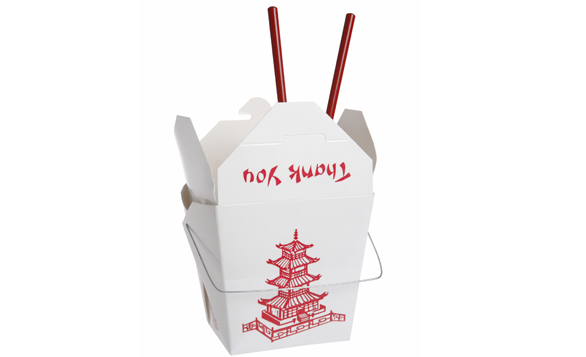 Turns out the fortune cookie that came with your chop suey isn’t actually Chinese … and neither is the chop suey. So where did they come from?
Turns out the fortune cookie that came with your chop suey isn’t actually Chinese … and neither is the chop suey. So where did they come from?
 Jennifer 8. Lee: The hunt for General Tso
In this TED Talk, journalist Jennifer 8. Lee shares the origins of some of America’s favorite “Chinese” food, and takes us on a culinary tour of Chinese restaurants around the world — whose menus often do not resemble those of restaurants in China.
Jennifer 8. Lee: The hunt for General Tso
In this TED Talk, journalist Jennifer 8. Lee shares the origins of some of America’s favorite “Chinese” food, and takes us on a culinary tour of Chinese restaurants around the world — whose menus often do not resemble those of restaurants in China.
This week’s TEDWeekends on the Huffington Post explores culinary cross-cultural evolutions, with great essays about the origins of our associations between cuisines and cultures. Below, find three great essays to pique your interest. And make you hungry.
Jennifer 8. Lee: Made in the USA… Chinese Food
When a dish really hits a nerve with the American palate, it can take off across the entire country, facilitated by food vendors’ freedom to copy good ideas. We saw it happen with General Tso’s chicken. We’re seeing it happen with other Asian-influenced culinary creations too…
When I was researching my book on Chinese food in America, The Fortune Cookie Chronicles, it puzzled me why Korean cuisine (unlike many of its Asian brethren) had not gone mainstream yet.
Chinese, Japanese, Thai, Indian and Vietnamese restaurants had all hit critical mass, with footholds in suburban towns. But Korean cuisine remained mostly ensconced within Korean-American communities, with an occasional lone outpost defiantly offering bibimbap. This puzzled me, because Korean savory barbecued meats — short ribs, grilled marinated beef — should be widely appealing to an American palate, which never met a barbecue recipe it didn’t like. But Korean restaurants basically remained serving Korean clientele, with the occasional Chinese family, like mine, that celebrated our Thanksgivings there. Read the full essay »
Fabio Parasecoli: General Tso Chicken: An Immigrant Life Saga
When I was studying Asian languages in Italy, back in the 1980s, the few Chinese restaurants open in my native city of Rome only served two kinds of desserts: fried fruit and fried ice cream — the unlikely creation that Jennifer 8. Lee singles out in her TED Talk about Chinese American food. When I moved to Beijing to pursue my studies, I soon discovered that these crunchy treats are unheard of in China. Chinese cooks in Italy likely came up with the concoctions to meet the expectations of Italian customers.
Fried ice cream, just like the General Tso’s Chicken, highlight the role of immigrants in facilitating the global circulation of culinary traditions, and in shaping the food of their host communities. These two examples show how moving populations have practiced the adaptation, assimilation, and appropriation of foreign or unfamiliar flavors, dishes, techniques, and behaviors all around the world. Culinary exchanges have been taking place for a very long time in the most remote corners of the globe, and they were not always peaceful and enjoyable. Lee reminds us that nineteenth century Asian immigrants to the U.S. were disparaged for eating rice, instead of more civilized fare. Sicilian cuisine still echoes the food traditions of the Islamic communities that once ruled the Mediterranean island in the Middle Ages. Roti became a common dish in many Caribbean locations after farmers were brought from India to work in the sugarcane plantations after the abolition of slavery. Read the full essay »
Theodore Johnson: African Americans and the Watermelon Stereotype
A photo of my expecting mother eating a slice of watermelon is a family favorite. She attributes my lifelong disdain for the fruit to the fact that she ate it every day while pregnant with me. I carry this story in the form of an oval, deep green blemish on my left hand. It’s true — I’m a black man with a watermelon for a birthmark.
In many countries and cultures around the world, this would be unremarkable. But in the United States, where watermelon is associated with historic African-American stereotypes, my birthmark takes on a more complex symbolism. Just as the undesirable leftovers of farm animals, such as pig intestines and feet, are linked to the slave diet, watermelon is the food most associated with the 19th and 20th century depictions of blacks as lazy simpletons. Read the full essay »
Comments (1)